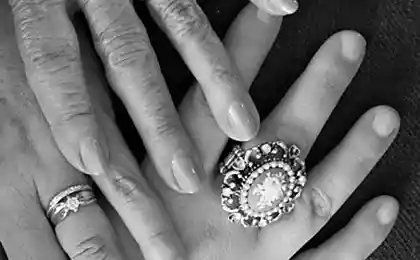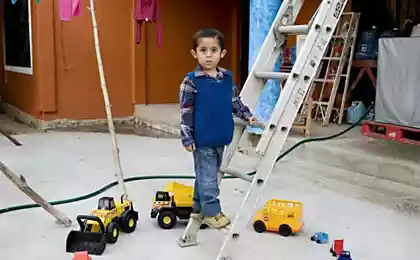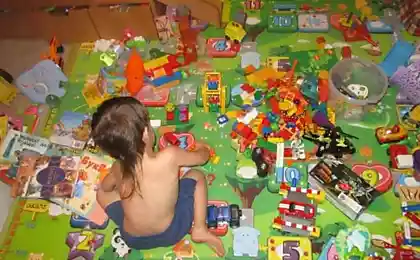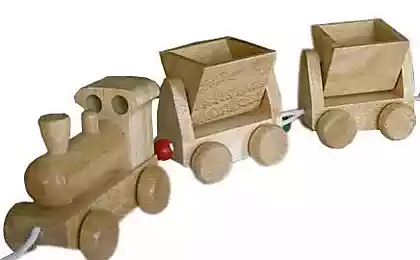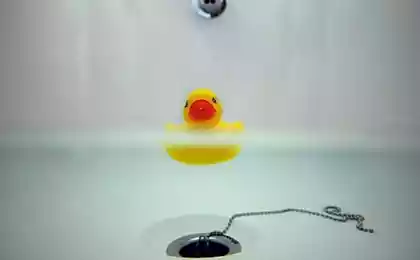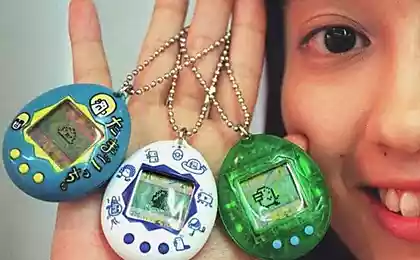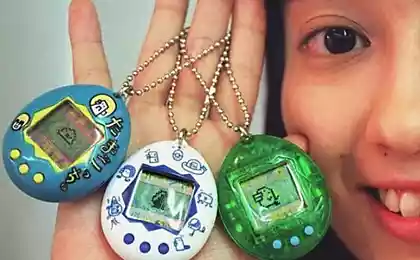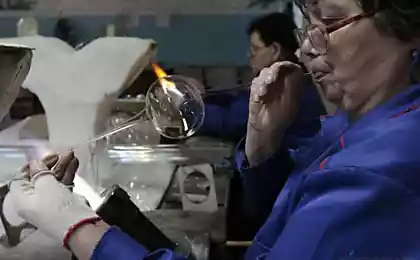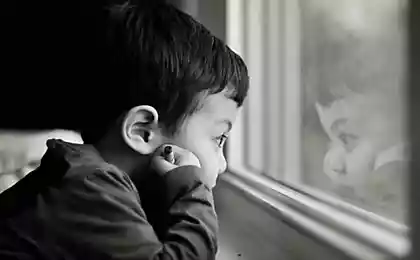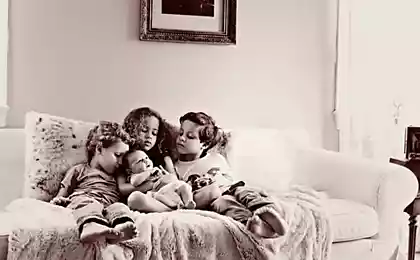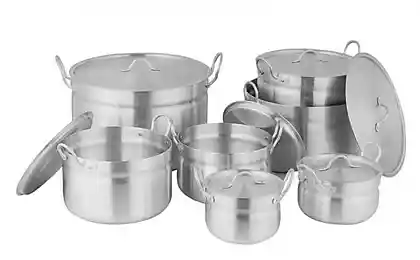295
What toys block imagination in children
Modern interactive toys block the creative thinking of children, so there should not be many of them, preference should be given to traditional dolls and soldiers, which allow at each particular age to develop a child’s imagination and ability to do something independently.

“I call a good toy that is convenient to play with, which develops a child’s play activity. As you know, play is the most important and useful activity for a child, she said.
The leading expert of the Moscow City Center for Psychological and Pedagogical Expertise of Toys at MSUPE (Moscow City Psychological and Pedagogical University), winner of the Grant of Moscow award, teacher - psychologist of the highest category Elena Abdulayeva.
“Parents often appreciate the brightness, the catchyness of the toy, and then they are very disappointed when it is lying around and the child begs for a new one.” It's all about boredom. The dominance of interactive toys, which now exists, is an extremely unhelpful thing, she added.
Talking interactive toys, firstly, replace the imagination of the child, while he can give the doll or beast a certain tone, intonation, words. Secondly, they supplant and replace real communication.
In addition, now there is a huge number of “terrible toys”, which are not associated in the child with either the image of a person or the image of an ordinary animal.
“The constant distortion of the image of man is a modern cultural trend, not only in toys but also in films and even textbooks. Now it has become fashionable to make films about ghosts, ghouls, aliens, vampires, said the teacher.
In addition, now sold toy heart, liver, a lot of designers where you need to collect a person from his internal organs. For young children, dismembering the human body is not a game. And when a child collects and then disassembles a person, it leads to the destruction of his ideas about the integrity of the person himself, as if his organs live an independent life.
A place for fantasy.
Useful toys are traditional toys that children have been playing for centuries. Ordinary dolls, soft toys, children's cutlery, soldiers, cars. Because play is the creation of an imaginary space, a world and a toy should not prevent a child from doing so.
Children do not play well in ready-made houses, since this space is invariable and does not involve adjusting to the current needs of the child, it quickly loses its novelty and value.
The child needs special objects for the construction of "their" space. It can be screens, boards, pillows, covers.
In England, for example, there are special stores where "junk" materials are sold as objects of creative play and construction.
If you want a child to develop imagination, he should have few toys, but for many variations of the game.
Children who live among the abundance of monotonous toys suffer from this. They are always unsatisfied, although they seem to have everything they want. From the fact that the child can not form creativity, mental and volitional abilities in free play, he is always lethargic and dissatisfied.
Now the toy ceased to be an element of the game, and became a testimony of dignity and an element of his property.
Toys are not bought to play, but to show off. Childhood is covered by this market element, the child has more and more toys that he does not play, which just lie in his room as his property.
Elena Smirnova believes that now parents pay off the number of toys due to insufficient attention. “According to our calculations, a child has an average of more than 200 toys in a room. He actually uses about 5-6% of what he has in the game, she explained.
If a child has favorite toys, they are enough.
Helping adults doesn’t end with providing the right toys. It is important to give the toy life, that is, to introduce it into the game, then the child will gladly pick it up. When a child is able to do something on his own, he has shine and joy in his eyes.
Source: deti.goodhouse.com.ua/kakie-igrushki-meshayut-razvitiyu-detskoy-fantazii/

- Interactive toys block creativity
“I call a good toy that is convenient to play with, which develops a child’s play activity. As you know, play is the most important and useful activity for a child, she said.
- To play with a toy, it does not have to be endowed with its own activity.
The leading expert of the Moscow City Center for Psychological and Pedagogical Expertise of Toys at MSUPE (Moscow City Psychological and Pedagogical University), winner of the Grant of Moscow award, teacher - psychologist of the highest category Elena Abdulayeva.
“Parents often appreciate the brightness, the catchyness of the toy, and then they are very disappointed when it is lying around and the child begs for a new one.” It's all about boredom. The dominance of interactive toys, which now exists, is an extremely unhelpful thing, she added.
Talking interactive toys, firstly, replace the imagination of the child, while he can give the doll or beast a certain tone, intonation, words. Secondly, they supplant and replace real communication.
In addition, now there is a huge number of “terrible toys”, which are not associated in the child with either the image of a person or the image of an ordinary animal.
“The constant distortion of the image of man is a modern cultural trend, not only in toys but also in films and even textbooks. Now it has become fashionable to make films about ghosts, ghouls, aliens, vampires, said the teacher.
In addition, now sold toy heart, liver, a lot of designers where you need to collect a person from his internal organs. For young children, dismembering the human body is not a game. And when a child collects and then disassembles a person, it leads to the destruction of his ideas about the integrity of the person himself, as if his organs live an independent life.
A place for fantasy.
Useful toys are traditional toys that children have been playing for centuries. Ordinary dolls, soft toys, children's cutlery, soldiers, cars. Because play is the creation of an imaginary space, a world and a toy should not prevent a child from doing so.
Children do not play well in ready-made houses, since this space is invariable and does not involve adjusting to the current needs of the child, it quickly loses its novelty and value.
The child needs special objects for the construction of "their" space. It can be screens, boards, pillows, covers.
In England, for example, there are special stores where "junk" materials are sold as objects of creative play and construction.
If you want a child to develop imagination, he should have few toys, but for many variations of the game.
Children who live among the abundance of monotonous toys suffer from this. They are always unsatisfied, although they seem to have everything they want. From the fact that the child can not form creativity, mental and volitional abilities in free play, he is always lethargic and dissatisfied.
Now the toy ceased to be an element of the game, and became a testimony of dignity and an element of his property.
Toys are not bought to play, but to show off. Childhood is covered by this market element, the child has more and more toys that he does not play, which just lie in his room as his property.
Elena Smirnova believes that now parents pay off the number of toys due to insufficient attention. “According to our calculations, a child has an average of more than 200 toys in a room. He actually uses about 5-6% of what he has in the game, she explained.
If a child has favorite toys, they are enough.
Helping adults doesn’t end with providing the right toys. It is important to give the toy life, that is, to introduce it into the game, then the child will gladly pick it up. When a child is able to do something on his own, he has shine and joy in his eyes.
Source: deti.goodhouse.com.ua/kakie-igrushki-meshayut-razvitiyu-detskoy-fantazii/
This flour is very useful in diseases of blood, skin, and not only
10 technologies that exploded in 2014



